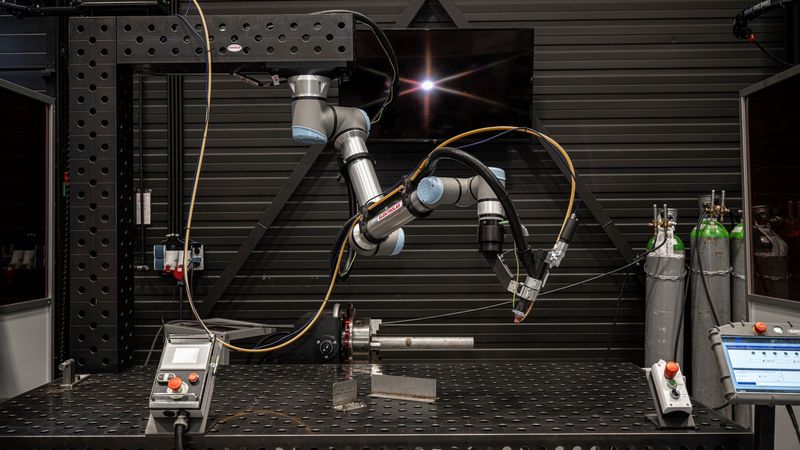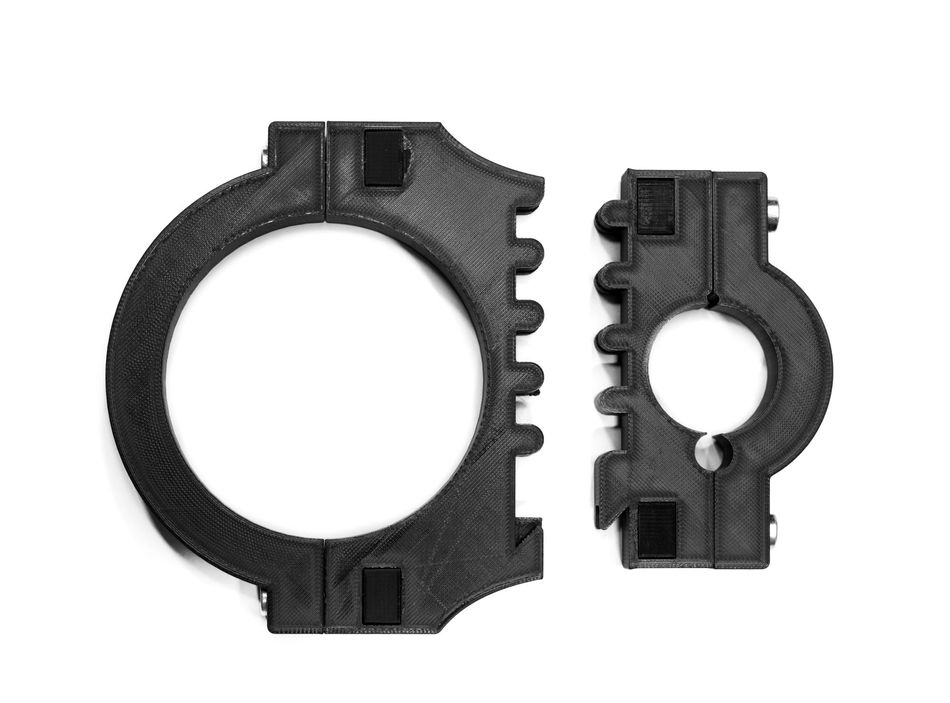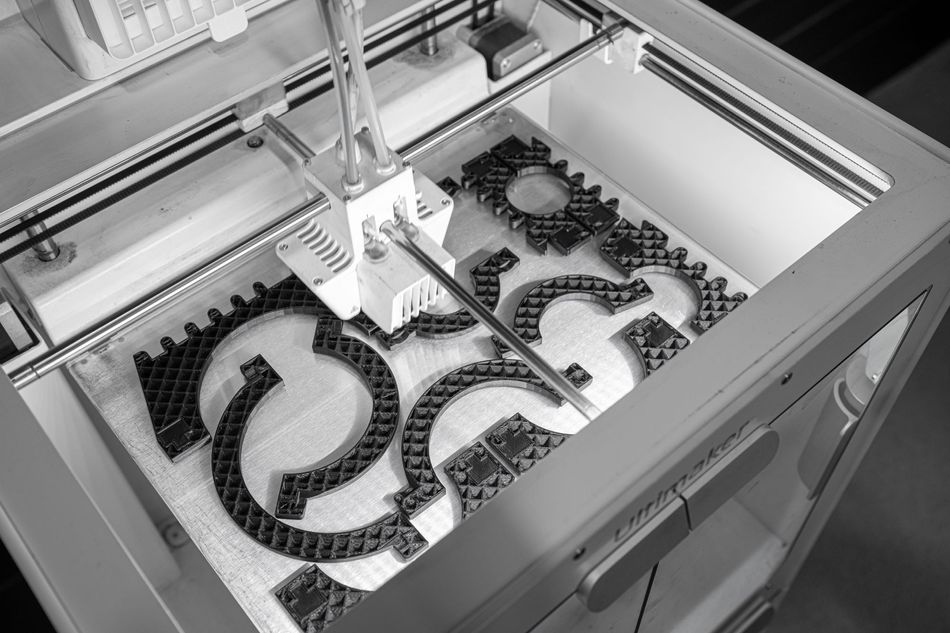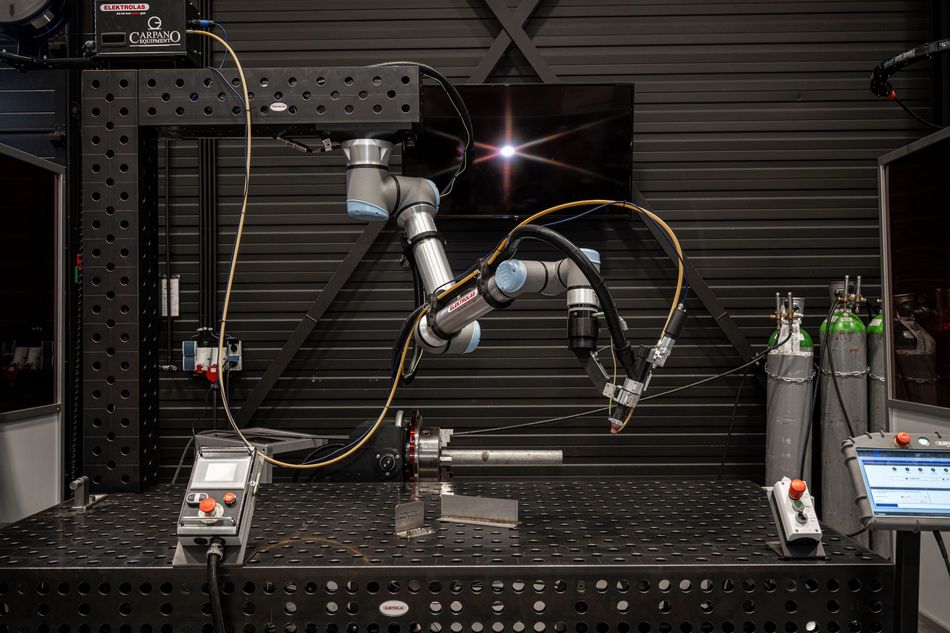How UltiMaker 3D Printing Supports Automated Welding
Dutch welding solutions specialist Elektrolas uses the UltiMaker S5 ProBundle to minimize machine downtimes and facilitate cobot welding for its customers.
Since its founding nearly 25 years ago, welding specialist Elektrolas has evolved from a company that supplies and maintains welding equipment to one that also offers training and quality management services and, most recently, welding automation services. In parallel to this expansion, the Dutch company has also evolved in terms of the technologies it uses. Notably, it has embraced the use of 3D printing (specifically, UltiMaker’s S5 ProBundle), which has enabled it to improve automated welding setups and streamline operations.
The road to 3D printing adoption
Like many companies familiar with more conventional production techniques, Elektrolas did not immediately recognize the benefits of integrating 3D printing into its processes. It took Thije van Delft, Technical Manager at Elektrolas, to invest in the technology himself and test out how it could be used in a welding context.
He says: “I had done some tests in school using 3D printers, and I asked the company owner [Joost van den Hooven] if I could buy one. He said it wasn’t possible, so I said ‘I will buy one myself’ and purchased a very simple 3D printer for a couple hundred euros and started with that. We did some tests and after some time, Joost was convinced”. From there, Elektrolas consulted with the engineering students participating in traineeships at the company (who were familiar with 3D printing through their studies) about which 3D printer hardware they should invest in. After much deliberation, UltiMaker’s S5 ProBundle was chosen.
Unlocking new applications
The UltiMaker 3D printer has played an important role at the company, particularly as Elektrolas has ramped up its automation department (spearheaded by van Delft), supplying robotic and cobot welding systems to customers in the Netherlands and beyond. To date, the company has sold and installed dozens of cobot welding systems, which empower its customers to accelerate their lead times and achieve consistent quality, all while mitigating labor shortages in the welding sector.
3D printing has come into play in the production of clamps, which are installed on welding cobots to keep things running smoothly and to ensure the freedom of movement of the robotic arm. Van Delft explains: “We have a holder and an arm clamp that attach the torch hose to the robot. This is made up of two parts: one part that clamps to the robot and one part that attaches to the hose. These are fixed with a fixing pin. If you wanted to make that using milling or other conventional processes, it would not be possible.”
The company has also found it possible to quickly iterate replacement parts for the 3D printed clamps. Made from Tough PLA, it does happen that the clamps break sometimes. “In this case it’s very easy to print a new one and send it the next day to the customer,” van Delft says. “The customer simply sends a picture of what part is broken, we start the printer, and the next day we can send it via DHL to the customer.” This, of course, has the obvious benefit of eliminating the need for large inventories of spare clamps, since they can be printed on demand.
Elektrolas has also turned to 3D printing in the production of temporary holders that attach hand welding torches to robotic or cobot systems. In this case, UltiMaker’s solution enabled Elektrolas to meet the needs of one of its customers who wanted to integrate a manual welding torch in an automated system. “We called the supplier of this welding torch, but the automatic version had a delivery time of 10-12 weeks,” van Delft recalls. By designing and 3D printing a holder to attach the welding torch to the robot, Elektrolas was able to offer its customer a stopgap solution while they waited for the final part from the welding torch supplier. This enabled them to keep their automated welding production up and running rather than being setback by system downtimes.
Why the UltiMaker’s S5 ProBundle?
While both UltiMaker and Elektrolas are based out of the Netherlands, the local appeal was only part of the equation when the welding company started looking for a 3D printing solution to adopt three years ago. UltiMaker’s S5 ProBundle is a professional-grade solution that combines UltiMaker’s reliable dual-extrusion technology with advanced features like automated material management, superior air filtration, and humidity control for filament. The 3D printer also has a sizable print volume (330 x 240 x 300 mm), which was an important factor for Elektrolas as the company often prints large components.
Ease of use and print quality were also top of mind for van Delft and his team. The UltiMaker S5 ProBundle delivered on both fronts. Elektrolas has achieved consistency from print to print thanks to the ability to save setup and print settings in Cura. As van Delft explains, he and his team are able to design the parts they need in SolidWorks and print them on demand with the touch of a button. This is also thanks to the work of their trainee students, who have pre-programmed print settings, and UltiMaker’s intuitive user interface, which enables one-button printing. “If, for example, a client wants to weld with some special machine but there is no welding torch on the robot, we can take a normal welding torch and sketch a holder in SolidWorks and then print it.” Using this approach, test parts can be delivered the next day.
In terms of printing materials, Elektrolas is primarily working with UltiMaker Tough PLA, a technical PLA filament that offers good toughness (similar to ABS), as well as minimal warping and excellent printability at an affordable cost. While not the most robust material in UltiMaker’s portfolio, Tough PLA does meet the needs of the welding company for the clamps and holders. Even the material’s weaknesses have proven to be a benefit. “I have twice received a request for a new 3D printed clamp because the operator of the robot made a mistake and broke the clamp when the torch hit some corner when the robot was moving,” van Delft elaborates. “Here it is good that the clamp breaks, because it protects the torch from breaking. The clamp is not expensive and easy to replace, the torch is not.”
Elektrolas also benefits from other features that come with the S5 ProBundle, including Air Manager, an enclosure that provides closed inside-out airflow and filters up to 95% of ultrafine particles (UFPs) generated in the printing process, and the S5 Material Station. This piece of equipment stores and protects up to six spools of filament and offers end-of-filament detection and automatic spool switching, which facilitates lights-out printing. “If you have a big print, it is maybe 35-45 hours of printing,” van Delft adds. “Since we have big prints, the material station can change the PLA by itself and keep the print going until it’s ready the next day.”
For 3D printer maintenance and technical support, Elektrolas turns to MakerPoint, a Dutch supplier of 3D printing systems and maintenance provider based in Arnhem, Best, and Harlingen.
Intuitive 3D printing for traditional manufacturing
Elektrolas is one of many businesses in the traditional manufacturing sphere that has reaped the benefits of UltiMaker’s professional 3D printing solutions. For example, industrial supplier ERIKS BV relies on UltiMaker systems for a range of applications, including prototyping, tooling, customized jigs and fixtures, and replacement parts. You can find more UltiMaker client stories here.





